Sounds
Pedal Effects
Pedal Glissando
Pedals can not only be used to change the accidentals, but also for different effects. To clarify, the D, C and B pedals are moved with the left foot and the E, F, G and A pedals by the right foot. The activation of a pedal requires the use of one feet, so that the activation of two pedals requires two feet.
Normally the pedals are not activated while a string is vibrating, because it produces a noise, like a sort of portando from one note to the other.
Exactly this effect is used in the pedal glissando, where the pedal is activated consciously while one or more strings are vibrating. This playing technique can be already observed around 1794 in a sonata by Martin-Pierre d’Alvimare, but got its popularity with Carlos Salzedo, who used this technique quite often. After him, André Caplet was inspired by him and used this effect as well in his Divertissement à l’espagnole, which marks the birth of a rhythmic use of the pedal glissando. Also in jazz (often used as rhythmic effect) and contemporary music the pedal glissando is a very common effect. The importance has grown that far, that sometimes it is given an own stave.
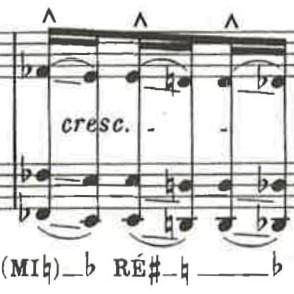
André Caplet, Divertissement à l'espagnole (1925) © Durand, Paris
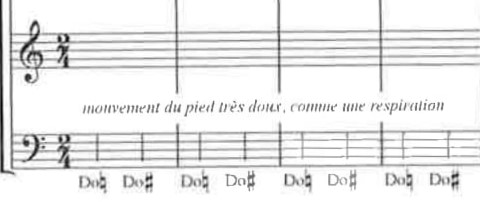
Geroges Aperghis, Fidélité (1982) © Salabert, Paris.
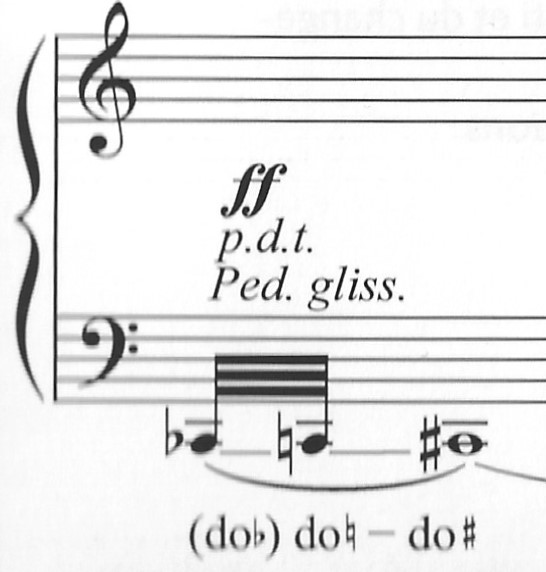
Heinz Holliger, Sieben Verse (2008) © Schott, Mainz.

Heinz Holliger, Sieben Verse (2008) © Schott, Mainz.
Pedal Trill
The pedal thrill is being performed with the same technique as the pedal glissando, with the difference that the pedal is being moved continuously forward and backward between two notches. The speed of the trill can vary and is sometimes indicated. The dynamic goes from pp to ff and depends on the dynamic of the plucked string and the register (the lower, the louder).
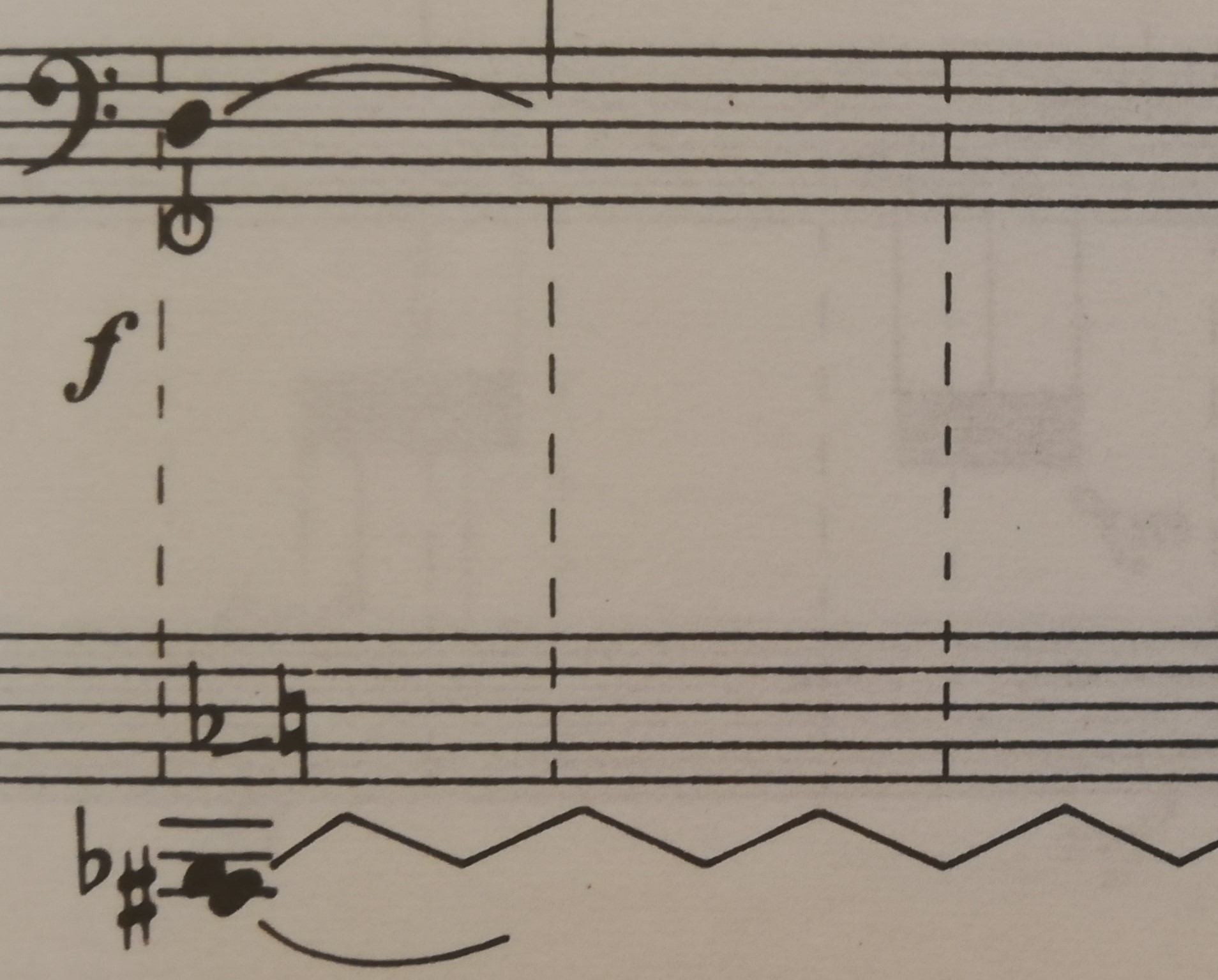
Bruno Giner, Distortions (1986) © Billaudot, Paris.
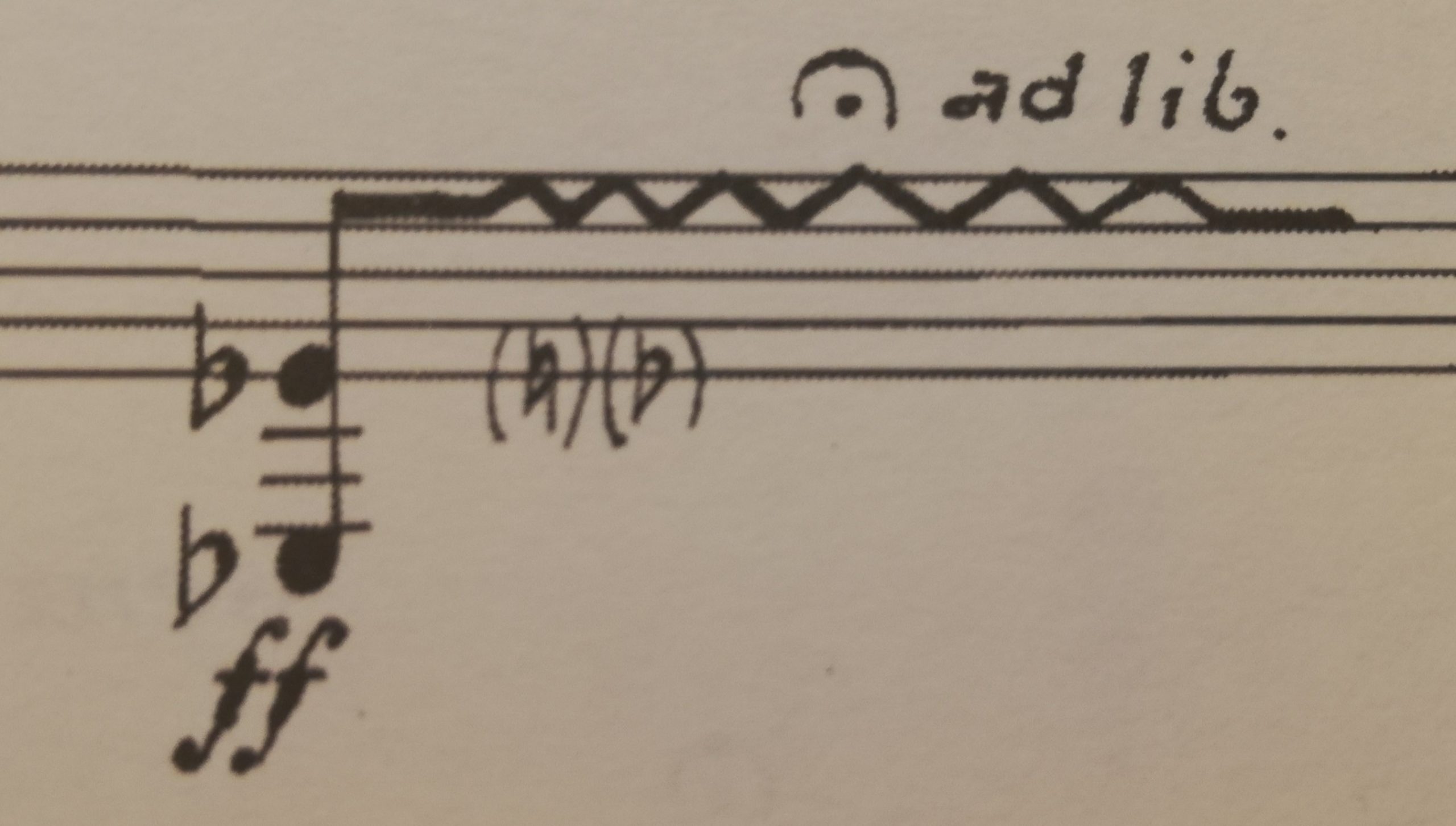
Yoshihisa Taïra, Sublimation (1971) © Durand, Paris.
Pedal Buzz
A pedal buzz occurs when the pedal is being hold between two notches and the played strings vibrate against the midway positioned discs. It can be a very powerful frizzing and metallic sound when carried out on wire strings. When performed on gut strings the result is a crackling buzzing sound which is used a lot in baroque music.
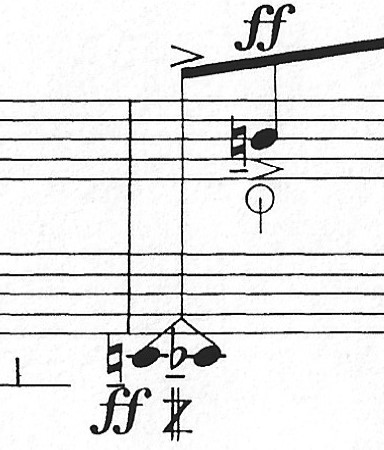
Luciano Berio, Sequenza II (1963) © Universal Edition, London.
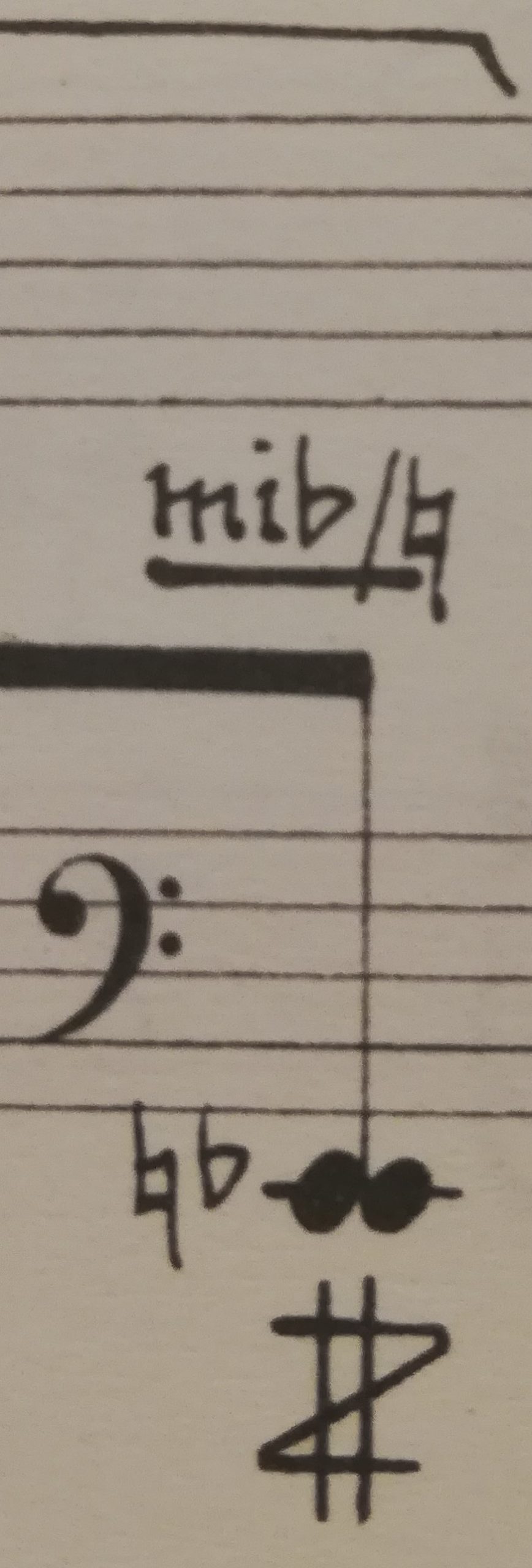
Ichiro Nodaïra, Messages I (1985) © Lemoine, Paris.
